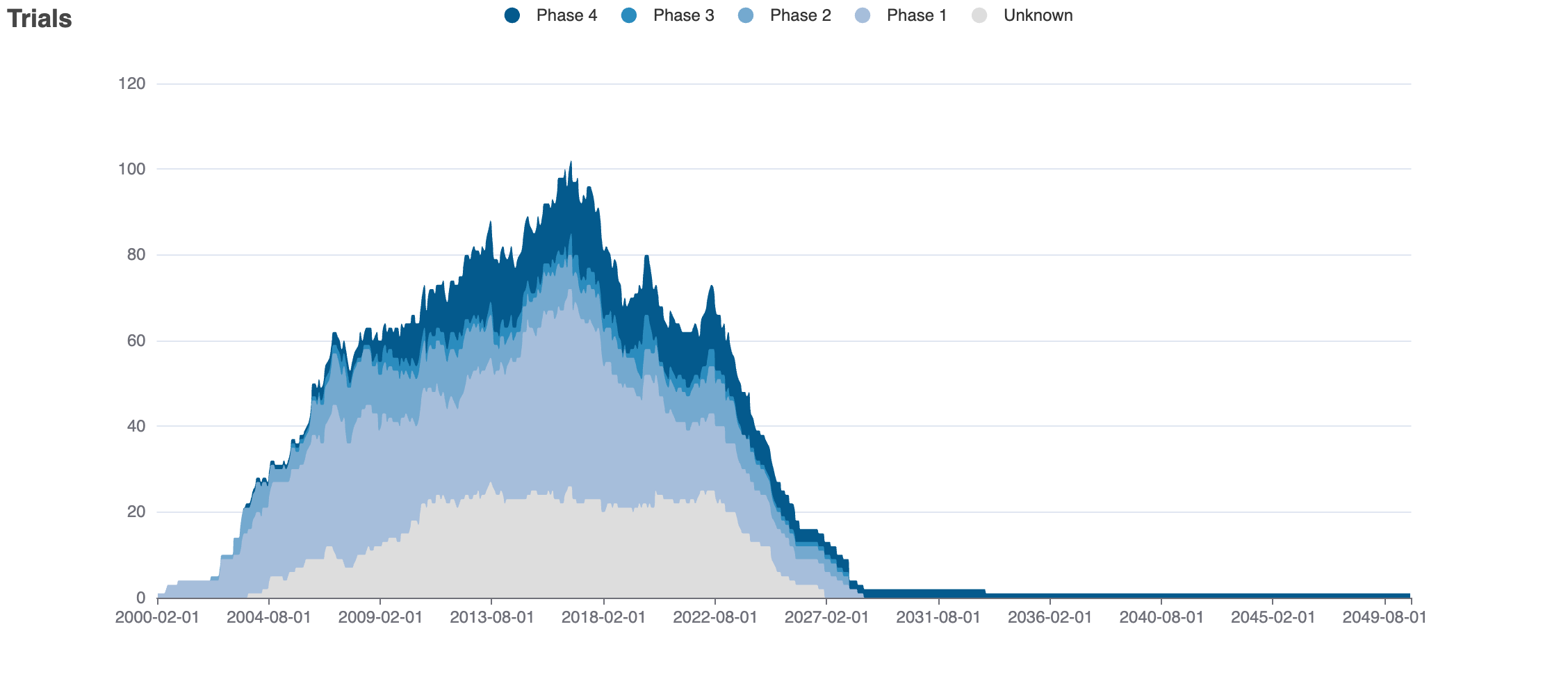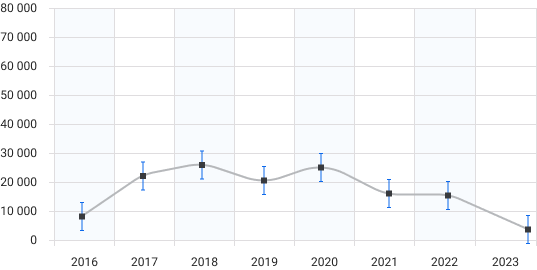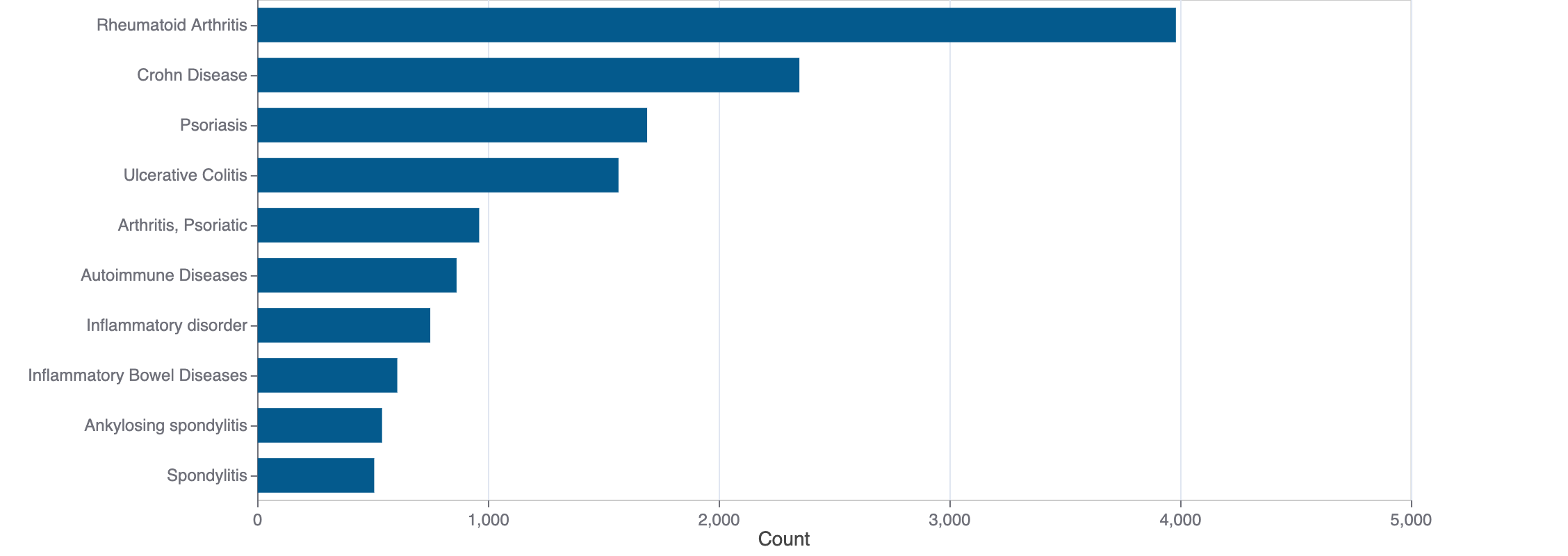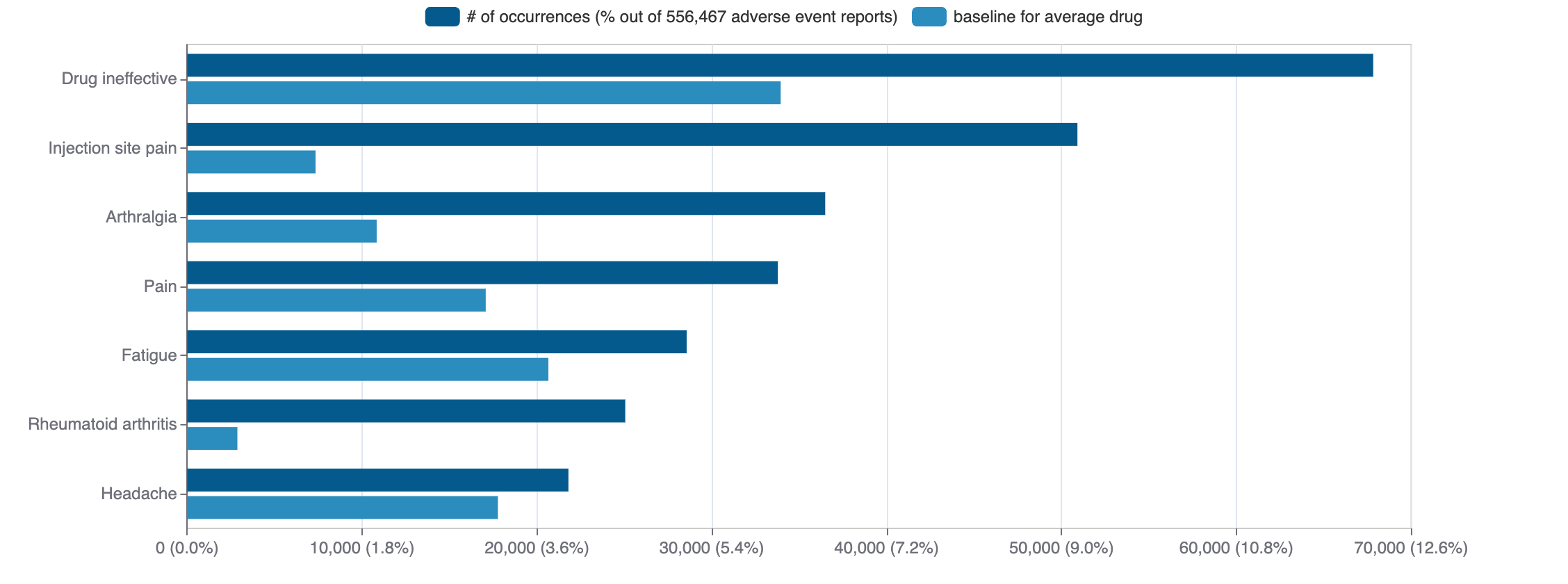Pimozide
Pimozide (pimozide) is a small molecule pharmaceutical. Pimozide was first approved as Orap on 1984-07-31. It is used to treat huntington disease, psychotic disorders, schizophrenia spectrum and other psychotic disorders, and tourette syndrome in the USA. The pharmaceutical is active against D(2) dopamine receptor and 5-hydroxytryptamine receptor 2A. In addition, it is known to target D(3) dopamine receptor, voltage-dependent T-type calcium channel subunit alpha-1I, G protein-activated inward rectifier potassium channel 2, voltage-dependent T-type calcium channel subunit alpha-1G, potassium voltage-gated channel subfamily A member 10, 5-hydroxytryptamine receptor 1A, histamine H1 receptor, 5-hydroxytryptamine receptor 7, voltage-dependent T-type calcium channel subunit alpha-1H, and 5-hydroxytryptamine receptor 6.
Download report
Favorite
Events Timeline
Commercial
Clinical
Drug
Target
Variants
Financial
Trends
Safety
Events Timeline
5D
1M
3M
6M
YTD
1Y
2Y
5Y
Max
Events
FDA approval date
EMA approval date
Patent expiration date
Study first post date
Last update post date
Start date
Primary completion date
Completion date
Results first post date

Mock data
Subscribe for the real data
Subscribe for the real data
Commercial
Therapeutic Areas
Trade Name
FDA
EMA
Pimozide (discontinued: Orap)
Indications
FDA
EMA
Agency Specific
FDA
EMA
No data
Patent Expiration
No data
HCPCS
No data
Clinical
Clinical Trials
15 clinical trials
View more details

Mock data
Subscribe for the real data
Subscribe for the real data
Indications Phases 4
Indication | MeSH | Ontology | ICD-10 | Ph 1 | Ph 2 | Ph 3 | Ph 4 | Other | Total |
|---|---|---|---|---|---|---|---|---|---|
| Schizophrenia | D012559 | EFO_0000692 | F20 | — | 1 | 1 | 3 | 2 | 7 |
| Psychotic disorders | D011618 | — | F20.81 | — | 1 | 1 | 2 | 1 | 5 |
| Schizophrenia spectrum and other psychotic disorders | D019967 | — | — | — | — | — | 1 | — | 1 |
Indications Phases 3
Indication | MeSH | Ontology | ICD-10 | Ph 1 | Ph 2 | Ph 3 | Ph 4 | Other | Total |
|---|---|---|---|---|---|---|---|---|---|
| Mental disorders | D001523 | EFO_0000677 | F91.9 | — | 1 | 1 | — | — | 2 |
| Dementia | D003704 | EFO_0003862 | F03 | — | — | 1 | — | — | 1 |
| Psychophysiologic disorders | D011602 | — | F45.9 | — | — | 1 | — | — | 1 |
| Depression | D003863 | — | F33.9 | — | — | 1 | — | — | 1 |
| Anxiety disorders | D001008 | EFO_0006788 | F41.1 | — | — | 1 | — | — | 1 |
| Somatoform disorders | D013001 | — | F45 | — | — | 1 | — | — | 1 |
Indications Phases 2
Indication | MeSH | Ontology | ICD-10 | Ph 1 | Ph 2 | Ph 3 | Ph 4 | Other | Total |
|---|---|---|---|---|---|---|---|---|---|
| Amyotrophic lateral sclerosis | D000690 | EFO_0000253 | G12.21 | — | 2 | — | — | — | 2 |
| Motor neuron disease | D016472 | EFO_0003782 | G12.2 | — | 2 | — | — | — | 2 |
| Sclerosis | D012598 | — | — | — | 2 | — | — | — | 2 |
| Intellectual disability | D008607 | EFO_0003847 | F73 | — | 1 | — | — | — | 1 |
| Tourette syndrome | D005879 | EFO_0004895 | F95.2 | — | 1 | — | — | — | 1 |
| Syndrome | D013577 | — | — | — | 1 | — | — | — | 1 |
Indications Phases 1
Indication | MeSH | Ontology | ICD-10 | Ph 1 | Ph 2 | Ph 3 | Ph 4 | Other | Total |
|---|---|---|---|---|---|---|---|---|---|
| Long qt syndrome | D008133 | HP_0001657 | I45.81 | 1 | — | — | — | — | 1 |
| Pharmacokinetics | D010599 | — | — | 1 | — | — | — | — | 1 |
| Pharmacological phenomena | D000069437 | — | — | 1 | — | — | — | — | 1 |
Indications Without Phase
Indication | MeSH | Ontology | ICD-10 | Ph 1 | Ph 2 | Ph 3 | Ph 4 | Other | Total |
|---|---|---|---|---|---|---|---|---|---|
| Drug-related side effects and adverse reactions | D064420 | — | T88.7 | — | — | — | — | 1 | 1 |
| Drug interactions | D004347 | — | — | — | — | — | — | 1 | 1 |
| Type 2 diabetes mellitus | D003924 | EFO_0001360 | E11 | — | — | — | — | 1 | 1 |
| Emergencies | D004630 | — | — | — | — | — | — | 1 | 1 |
| Bipolar disorder | D001714 | EFO_0000289 | F30.9 | — | — | — | — | 1 | 1 |
| Tinnitus | D014012 | — | H93.1 | — | — | — | — | 1 | 1 |
| Post-acute covid-19 syndrome | D000094024 | — | — | — | — | — | — | 1 | 1 |
Epidemiology
Epidemiological information for investigational and approved indications
View more details
Drug
General
| Drug common name | Pimozide |
| INN | pimozide |
| Description | Pimozide is a member of the class of benzimidazoles that is 1,3-dihydro-2H-benzimidazol-2-one in which one of the nitrogens is substituted by a piperidin-4-yl group, which in turn is substituted on the nitrogen by a 4,4-bis(p-fluorophenyl)butyl group. It has a role as a H1-receptor antagonist, a serotonergic antagonist, a first generation antipsychotic, an antidyskinesia agent and a dopaminergic antagonist. It is a member of benzimidazoles, an organofluorine compound and a heteroarylpiperidine. |
| Classification | Small molecule |
| Drug class | Typical antipsychotic |
| Image (chem structure or protein) |  |
| Structure (InChI/SMILES or Protein Sequence) | O=c1[nH]c2ccccc2n1C1CCN(CCCC(c2ccc(F)cc2)c2ccc(F)cc2)CC1 |
Identifiers
| PDB | — |
| CAS-ID | 2062-78-4 |
| RxCUI | — |
| ChEMBL ID | CHEMBL1423 |
| ChEBI ID | 8212 |
| PubChem CID | 16362 |
| DrugBank | DB01100 |
| UNII ID | 1HIZ4DL86F (ChemIDplus, GSRS) |
Target
Agency Approved
No data
Alternate
CACNA1I
CACNA1I
CACNA1H
CACNA1H
Organism
Homo sapiens
Gene name
CACNA1I
Gene synonyms
KIAA1120
NCBI Gene ID
Protein name
voltage-dependent T-type calcium channel subunit alpha-1I
Protein synonyms
Ca(v)3.3, calcium channel, voltage-dependent, alpha 1I subunit, calcium channel, voltage-dependent, T type, alpha 1I subunit, Voltage-gated calcium channel subunit alpha Cav3.3
Uniprot ID
Mouse ortholog
Cacna1i (239556)
voltage-dependent T-type calcium channel subunit alpha-1I (E9Q7P2)
Variants
No data
Financial
Revenue by drug
$
€
£
₣
No data
Estimated US medical usage
Pimozide
Total medical expenditures per year (USD, in millions)

Mock data
Subscribe for the real data
Subscribe for the real data
Number of persons purchased

Mock data
Subscribe for the real data
Subscribe for the real data
Number of purchases

Mock data
Subscribe for the real data
Subscribe for the real data
Refill frequency

Mock data
Subscribe for the real data
Subscribe for the real data
Price per prescription (USD)

Mock data
Subscribe for the real data
Subscribe for the real data
Tabular view
Trends
PubMed Central
Top Terms for Disease or Syndrome:

Mock data
Subscribe for the real data
Subscribe for the real data
Additional graphs summarizing 4,895 documents
View more details
Safety
Black-box Warning
No Black-box warning
Adverse Events
Top Adverse Reactions

Mock data
Subscribe for the real data
Subscribe for the real data
14,467 adverse events reported
View more details
© 2020-2025 Collaborative Drug Discovery Inc. (CDD) | Terms of Use